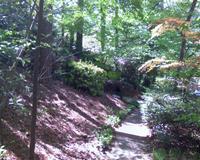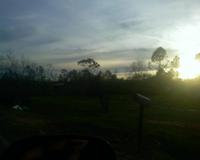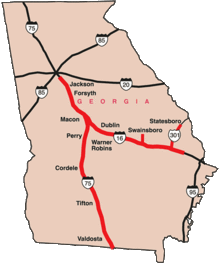I chose to experience life on foot today and stepped out the door.
It’s a different way of looking at things than my usual Sunday method, a bicycle which after 25 years feels more like a magic carpet, effortlessly taking me 10-20 miles at a stretch. On the bike I seek flat, thin roads, I react to traffic, and I live for my own heartbeat.
It’s different on foot. I avoid traffic, I adjust speed to effort so I won’t breathe hard. I seek out hills. I can see how each house and yard are different. Some are elaborate gardens, others greenswards, still others (like this one) are left to tend themselves.
Everything, of course, is more beautiful in spring. This year it’s also hard, the cold giving a clarity to every view, brightening the light and deepening the shadows. I gradually came to realize as I made my way through the neighborhoods how unusually wealthy I have become.
Most Americans can’t do this. They can’t walk out of the doors and find a quiet walk. Neither can most find a decent bike ride.
That’s because most of America is designed around cul de sacs, complexes, gated communities, each with one exit to the street. The suburban plat means each through street must carry a vast sea of traffic. Try to walk along it and you’ll choke on the air, the cacophony of engines and radios slowly driving you insane. You’ll also be left with a distinctly second-class feeling.
The only way Americans today experience America, once they leave their homes, is from the virtual home of an automobile, a mini-environment under the control of the driver — music, mood, air all conditioned to the driver’s temperament. Millions of little empires ride our freeways each day.
We experienced this America during the week, my bride of 30 years and I taking a jaunt southward, both to visit a friend and to get away. Georgia, like most American states, now has its geography defined by its freeways. There is the circle of Atlanta, bisected by I-75 and I-85, which cross one another after flowing into that current of traffic known as The Connector. There is the horizontal slash of I-20, and the vertical of Georgia 400. This defines reality for most people.
Below Atlanta I-75 defines life. It is the thrumming artery between the Midwest and Florida (the northeast’s artery, I-95, just cuts through a corner of the state, from Savannah toward Jacksonville). Everyone in Georgia is real-estate happy, has been for years, it’s the only thing that works anymore, and I-75 is at the heart of the boom, each exit another chance to build more copies of the same 5 hotel chains, the same 5 fast-food restaurants. It’s all lined with billboards, the cities all moved to the side of the road — go 5 miles in either direction and everything becomes quiet, empty, economically dead.
South Georgia, I learned, now has its own real estate boom. The Floridians are coming, the Floridians are coming. The signs are everywhere — will subdivide. And when they subdivide, each parcel becomes a cul de sac, feeding into the same main road, so that formerly placid country drives like US 19 are now practically freeways — the Georgia-Florida highway — and even Thomasville, in the far Southwest corner of the state, now has a bypass. Because it’s just 35 miles or so from the state line, and Tallahassee. The Floridians are coming! The Floridians are coming! Put up a sign.
It doesn’t have to be this way. We don’t have to be locked into cul de sacs, unable to leave for any purpose without the Osama May I of the fill-up. We don’t have to be locked into our cars, with their fast food wrappers and dead coffee cups.
We choose to live this way.
We can choose another way.
We can choose to walk, or to ride. And when we do, when we demand these things, our land use patterns will change as well.
That change is coming. Each fill-up I can feel it coming. $2.30/gallon, $2.40/gallon, $2.50/gallon. Where is the breaking point?
We’ll see. What will we be then? When we wake up from this auto-erotica, and step out to the light, on foot, the noise abating, the air clearing. When we see our neighbors again and hear the birds sing.
No matter to me. I can already see the neighbors, already hear the birds. And smell the flowers. Because I live in a city, where there are blocks, real blocks, cut by dozens of curbs. There are highways, but we’re not limited to them. We can walk, or ride, or drive slowly down two-lane roads.
How is it that America’s cities are now more peaceful than its exurbs? And how can we change this? Just some Easter questions to consider as the War Against Oil proceeds.













